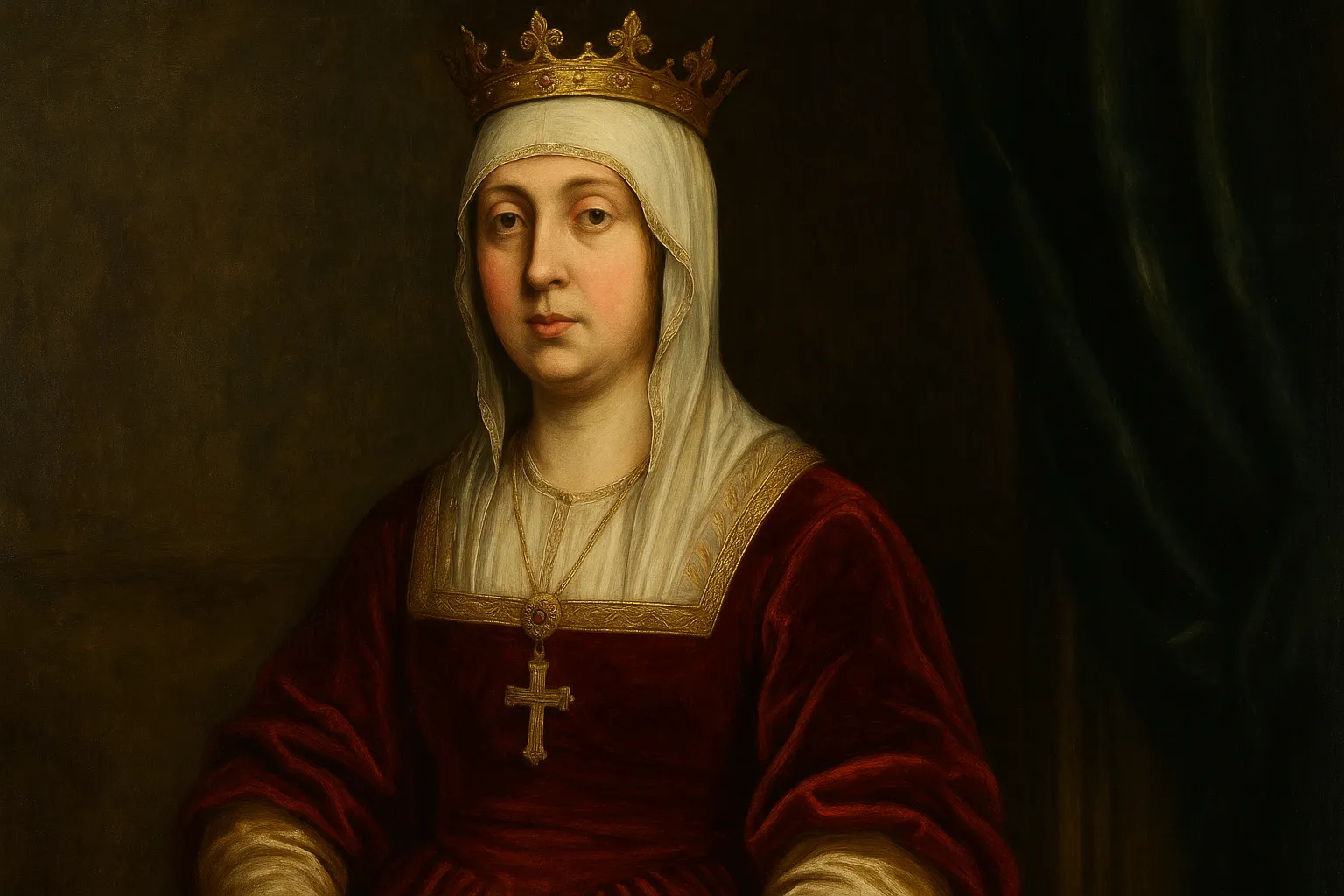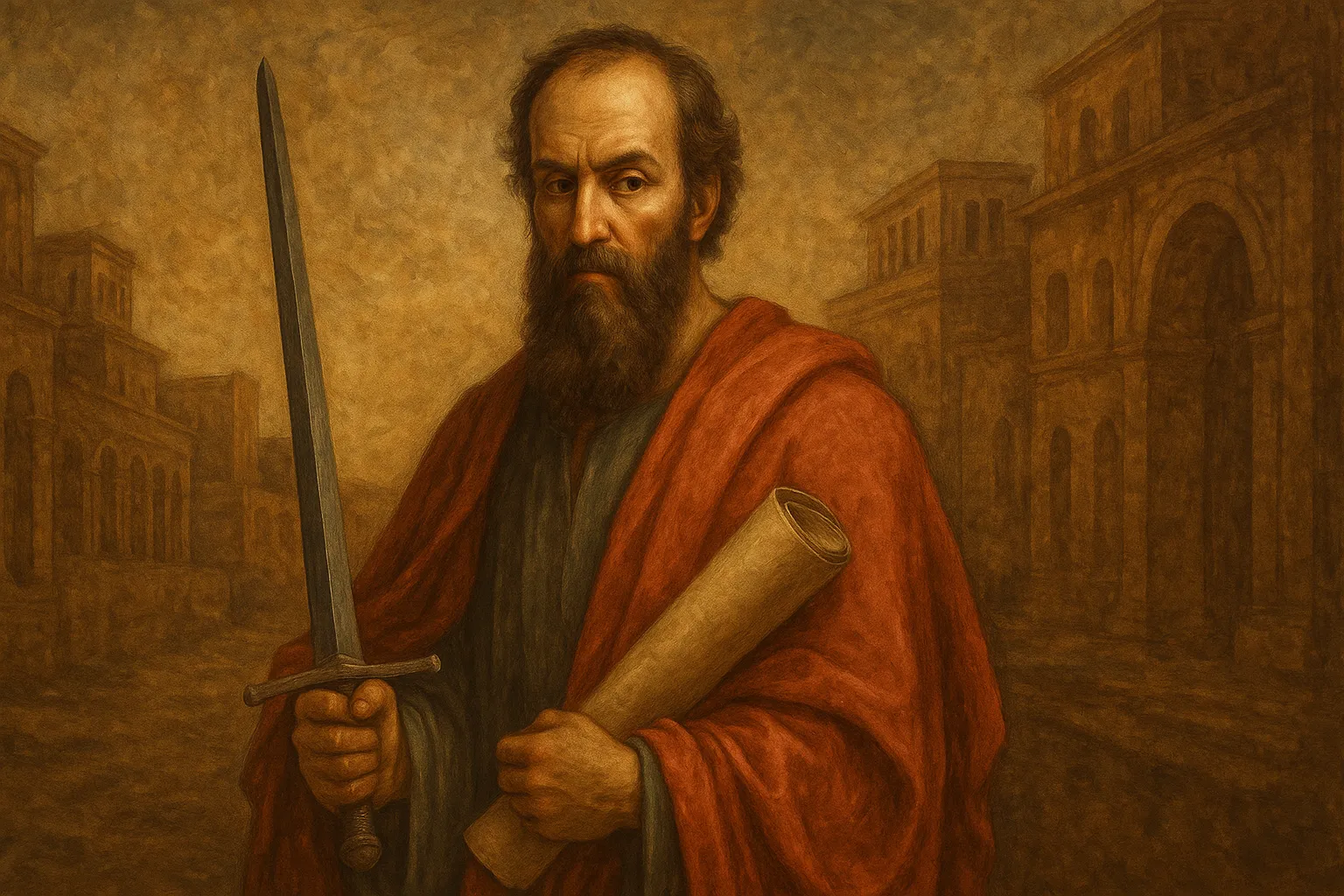Jesús de Nazaret

If we don’t take the Gospels into account, the image of Jesus Christ that surrounds the message of the birth of Christianity remains shrouded in mystery. There are few documents that can be used as sources of information for the historical study of the life of Jesus Christ. Although he is the most prolific figure in works of art, whether paintings or sculptures, his features and appearance are unknown and, more importantly, it is impossible to write his biography in the modern sense of the term. Like Socrates, he left no written record. The gospels of Mark, Luke, Matthew and John have no historical intent: these narratives, written in a specific literary style, were intended to leave a written record of the master’s life and message.
The supposedly radical criticism of the Gospels by liberal Protestants denies even the historical existence of the Nazarenes. Neither Justus of Tiberias, in his History of the Jews, nor Philo of Alexandria mention Jesus. But their historical presence is well attested by many writers, such as Tacitus in his Annals, Suetonius in his Vita Claudii, and Pliny the Younger, governor of Bithynia, who wrote to the emperor around 70 AD in a letter to him. Bithynia, Pliny the Younger, governor of Bithynia, in a letter to the emperor Trajan around 70 AD, and the historian Flavius Josephus.
Pliny the Younger mentions in his letter “a multitude singing hymns and glorifying Christ as God”. Tacitus, in his Historia (written at the beginning of the 2nd century AD), refers to Christ as “a man condemned to death by the governor Pontius Pilate at the time of the Empire of Tiberius”. The first reference to “Jesus, the so-called Christ” in the Antiquities of Judea by the historian Flavius Josephus (written around 93 AD) concerns the execution of the apostle James in Jerusalem, and is later cited in the translation of Agapius, bishop of Syria, stating that “a wise man named Jesus who was known for his behavior and virtues”, and that “many Jews and people from many other countries came to him. Pilate condemned him to die on the cross. But those who followed him didn’t stop being faithful to his ideas. They said that three days after his crucifixion he appeared to them alive. Perhaps he was the Christ of whom the prophets had foretold many wonderful things.
Jews and Romans

The teachings and life of Jesus cannot be understood without placing them in their historical context. Palestine was a territory under the Roman Empire, which was at the height of its political and territorial splendor. Caesar Augustus (who died in 14 AD) succeeded his son Tiberius (a contemporary of the Nazarenes), and the Mediterranean Sea became a Roman lake, with imperial authority on all shores. By the time of Jesus, the philosophy of Socrates and the metaphysics of Plato and Aristotle had lost their appeal. The most popular philosophical systems of the time were Epicureanism and Stoicism. Jesus’ teachings contained some elements of both systems. For example, the Stoics preached equality and fraternity for all. On the other hand, mysticism was still prevalent, such as that of Eleusis and Dionysius. Even the Egyptian mysticism of Osiris enjoyed a high reputation in Rome.
The Jewish world came under Roman rule between 37 and 4 BC, starting with Herod the Great. Emperor Augustus confirmed him as king of Judea because Herod had helped him march from Ptolemaic territory to Egypt. The Jewish world inherited a long religious tradition, essentially dominated by two groups or sects: the Pharisees and the Sadducees. The Pharisees were the middle class, the Sadducees were the wealthy priestly aristocracy, and the most powerful family at the time of Jesus was the House of Annas. The Pharisees’ authority was based on piety and culture, while the Sadducees’ authority was based on lineage and status. While the Pharisees were more progressive, the Sadducees were more conservative and readily accepted Roman rule, which allowed them to maintain their privileged position. While the Pharisees were concerned with raising the religious level of the masses, the Sadducees were concerned with indoctrinating and attracting those associated with the administration and rituals of the temple.
On the fringes of both trends were the fanatics. When the Roman consul Quirinius ordered a census in Palestine around 6 BC, the Sadducee Pharisee and the Galilean Judas Gamara led a revolt of disgruntled Jews. A crowd gathered around them and carried out several campaigns against the Romans. This was the origin of the Zealots, who broke with the Pharisees and became fervent patriots, using various means (including deadly attacks) to get rid of their foreign oppressors and punish Jews who cooperated with the Romans. They used a short dagger called a sicca to carry out assassinations and were therefore called sicarii (“sicarri” or “sicklers”) by the Romans.
The Hidden Life

All this happened in the first century AD. However, even for the most rational Catholic interpretations, no facts about the life of Jesus Christ can be proven with absolute certainty. Jesus was the son of Joseph of Nazareth and his betrothed Mary (whose wedding had not yet taken place) was pregnant, according to the mysterious announcement of the angel Gabriel to the makers, but the fruit of her womb was not the work of man but of the Holy Spirit. Maria was a cousin of Elizabeth, wife of Zechariah the priest, who gave birth to John the Baptist later in life.
At that time, Caesar Augustus issued a decree obliging people all over the world to register. St Josephand the Virgin Mary had to travel to Bethlehem in Judea, about 120 kilometres from Nazareth. It is likely that they travelled in a caravan with other travellers. The cash-strapped couple spent a night on the outskirts of Bethlehem and took refuge in a cave used by shepherds. There she went into labour and gave birth to her firstborn son, and as there was no room available in the inn, she had to put the baby in a manger.
Tertullian believes that this census was initiated by Sancelo Saturninus, who was governor of Syria from 8 BC to 2 BC, and who likely completed the census initiated by Quirinius. As a result, it is widely believed that Jesus was born between 7 BC and 6 BC.
The Gospel of Luke tells us about a simple but remarkable event at the time of Jesus’ birth: An angel announced the birth of Jesus to some shepherds who travelled to Bethlehem and ‘praised and glorified God for all that they had seen and heard’ (Luke 2:20). The Gospel of St Matthew tells us about the visit of three mysterious kings from the East, who came on a pilgrimage to Jesus, guided by a star, and offered gold, myrrh and frankincense. Earlier, these ‘magical’ kings had wandered into Jerusalem and asked, ‘Where was the King of the Jews born?’ This question terrified the king, and a few days later he ordered the slaughter of all male children, an event that Christians celebrate every year on 28 December as Holy Innocents’ Day. Sensing imminent danger, Joseph and Mary fled Bethlehem with their son and fled to Egypt for refuge until King Herod’s death.
In Nazareth, Jesus studied the scriptures and the oral traditions of the Jews, so much so that when he was only twelve years old, the scholars of the law who listened to him in the Temple were amazed at his knowledge. When ‘the boy grew up and his heart was filled with wisdom’ (Luke 2:40), he lived an ordinary life working with his father. Nothing else is heard of him until he was thirty years old; only those fictional accounts in the Apocrypha, i.e. anonymous or erroneously attributed writings of unknown origin, mostly from Gnostic sects, tell of the last years of Jesus’ youth. Particularly striking is the abundance of miraculous elements in these works, often ambiguous and abusive, in which history and symbolism become obscured.
Preaching

At the beginning of Jesus’ public ministry in the Gospel of Luke, Luke focuses on describing in detail the content of the preaching of John the Baptist, to whom Jesus later went to be baptised. However, only one part of the content is useful: ‘the fifteenth year of Tiberius Caesar’, a reign that began on 19 August 14 AD. According to the Roman calendar, the fifteenth year ran from 19 August 28 AD to 18 August 29 AD. On the other hand, there is no agreement on the duration of Jesus’ public life. Although the three Gospels mention one Easter, the author of St John’s Gospel clearly states that there were three.
John the Baptist began preaching the imminent coming of the Messiah and baptised those who heard him in the Jordan River. When Jesus was baptised by John (his cousin), the evangelist claims that there were signs in the heavens indicating that Jesus was the Son of God. Before beginning his ministry, Jesus went into seclusion in the desert and fasted for forty days, during which time, according to the Gospels, he tested his spiritual strength in the face of Satan’s temptations.
On his return from the desert, Jesus began to spread his teachings on his own, and became widely known in the synagogues he attended every Saturday. One day he was spreading his teachings in his village. He chose a passage in which the prophet Isaiah prophesied about the Messiah, God’s anointed one, who would evangelise the poor and give freedom to the oppressed. He told them that he was the one of whom the prophets had spoken. He was offended by this pride (everyone knew he was Joseph’s son) and they tried to throw him off a cliff. This would be his fate throughout his missionary career: His followers could not understand him, which eventually led to the betrayal of one of his favourite disciples. However, his preaching soon attracted large crowds of people, and he taught in parables and performed miracles that filled people with wonder and strengthened their faith in his teachings.
This made the scribes and Pharisees resentful, because Jesus stole their lustre and the popularity of the people. The Pharisees complained that Jesus was throwing parties and feasts. Worse still, he hung out with tax collectors, sinners and social outcasts: So the Pharisees accused him of being a drunkard and a party-goer. Meanwhile, Jesus chose twelve disciples: Simon (whom Jesus called Peter), his brother Andrew, James, John, Philip, Bartholomew, Matthew, Thomas, James the Zealot, Simon the Zealot, Judas son of James, and Judas Iscariot. They were ordinary men, mostly fishermen who earned their living by hard labour. They paid taxes to the Romans, like the crowds, and rebelled against the life of privilege lived by the scribes, Sadducees and Pharisees. Jesus proposed to them a new religious and even social order that was free of hypocrisy and in which solidarity with the poor was vital.
The so-called “Sermon on the Mount” is probably the most important of all his sermons because it is a sermon that was preached before the selection of the twelve disciples and the many miracles performed in the land of Galilee, according to the Gospel of Luke. In this Gospel discourse, which is called the Beatitudes in the biblical tradition, Jesus greets the crowd with the words, “Blessed are the poor in spirit, for theirs is the kingdom of heaven.” “Blessed are you who hunger now, for you will be filled. Blessed are you who weep now, for you will laugh.” (Luke 6:20-21) And immediately after saying this, he added, ”Blessed are you when people hate you and when they exclude you and insult you and say evil things about you because of the Son of Man. He presents the conditions that those who choose to follow Him must meet. The central theme of this message is the idea of a divine Father, for it is from this reality that the Creator’s love and generosity for all human creatures flows.
The Sermon on the Mount reveals a profound knowledge of human behavior, reinterpreting the Law of Moses to clarify its basic principles and adapting its prescriptions to human needs. For example, when the Pharisees criticized the disciples for picking corn ears or performing miracles and healing the sick on the holy day for the Jews, Jesus said, “The Sabbath was made for man, not man for the Sabbath” (Mark 2:27), which can be understood in this sense. Love your enemies (“Love your enemies and do good to those who hate you”), and mercy (“Be merciful, even as your Father is merciful.”) “Judge not, that you be not judged; condemn not, that you be not condemned; forgive, that you be forgiven“ (Luke 6:27-36), mercy (”Give, and it will be given to you… For the measure you give will be the measure you receive“) or orderly passion (”There is no good tree that bears bad fruit, nor, conversely, a bad tree that bears good fruit”) is another aspect of the same basic idea contained in the phrase “love God and love your neighbor.”
From a strictly secular perspective, Jesus fits squarely within the human frame, but that does not make him any less worthy of study and attention. He defined himself as a teacher, broke the Sabbath rules, and had female disciples (Mary and Martha, Joanna, the wife of Herod’s steward Chuza, and Susanna, among others). They did not follow the instructions of the Jewish ruling class, such as accompanying them and staying at their homes. Jesus’ friends were ordinary people who accompanied him to parties and weddings. Jesus’ teachings, which for the first time talked about new concepts such as love for neighbors and enemies, mercy for sinners, and respect for people regardless of their status, soon came into conflict with the Jewish clergy.
The Jewish priestly class was concerned about the impact that Jesus’ preaching would have on the people, and they invited scribes and Pharisees to attend Jesus’ sermons to challenge his authority with clever questions. Jesus skillfully avoided all of their traps, and the Sanhedrin failed to seek the support of the Roman authorities to suppress the “agitator.” However, not only the priests but also Herod Antipas himself was uneasy about the title that caused Herod to lose the awe of a foreign oppressor because this Nazarene was risking being called the king of the Jews. There was a time when Jesus clearly said, “He who is not with me is against me.” Do not become like the hypocritical scribes and Pharisees, like the viper, like the tomb full of whitewashed, rotten meat. Do not hoard wealth, do not sell property, do not give charity… And the events collided on their own.
Jesus sent out the seventy-two disciples two by two to preach in the Jewish villages, and the disciples began a vigorous religious movement as if they were going to conquer the temple. Jesus knew that his time had come and went from Galilee to there. Herod Antipas, whom Jesus called a fox, was wandering around, and the priests were watching carefully, waiting for an opportunity to set a trap. But Jesus did not want to be persuaded. Instead, he provocatively entered Jerusalem and was crowned king in front of the crowd that filled the city for the Passover festival. He then asserted his authority in the temple, the nerve center of the Jewish world. He hated the place of prayer being turned into a money-making market, so he ordered the merchants to be driven out with a whip.
Jesus’s suffering and death

On the day of the Feast of the Passover, when the lamb was sacrificed, Jesus prepared the Last Supper with his disciples and proclaimed his own death, saying, “I have eagerly desired to eat this Passover with you before I suffer, but I tell you, I will not eat it again until it is fulfilled in the Kingdom of God.” (Luke 22:16) In the Gospel accounts of the Passover meal, Jesus shows the expression of God’s new covenant with humanity by washing the feet of his disciples and sharing bread and wine with them. He then warns his disciples of what is to come. “The hand of him who betrays me is at the table” (Luke 22:21), he says, foretelling that one of his disciples would betray him, and that his beloved Peter would repent of his actions but would deny him three times: ‘You will deny me three times before the rooster crows twice this night’ (Mark 14:30).
Persecuted by the Sanhedrin, betrayed by His disciple Judas Iscariot and denied by St. Peter, Jesus is left alone to face the condemnation of the Sanhedrin and the rejection of Herod Antipas, who sends Jesus back to Pilate of Pontus, who “washes his hands” and condemns Barabbas to be released. Pilate “washes his hands” and condemns Barabbas, apparently the leader of a rebel movement accused of murder, to be released. The Roman procurator tries in vain to prevent the crucifixion of Jesus, whom he believes to be innocent. Under pressure from the priests of the Society, who incite the masses to demand the death of this dangerous “rebel,” he finally decrees that Jesus must be crucified.
He is accused by the Sanhedrin of prophesying the destruction of the temple (“the day is coming when there will not be left here stone upon stone”; Lk. 21:6) and claiming to be the Son of God. Moreover, under Roman law, believing himself to be king of the Jews, by the standards of the powerful priests of the Sanhedrin, contributed to the growing political instability. After being condemned, Jesus is humiliated, tortured and forced to carry his own cross to Mount Calvary where he is crucified.
All four Gospel writers agree that Jesus died on Friday. The day of Jesus’ death was not the Sabbath because the guards were armed and the shops were open (Joseph of Arimathea was able to buy a shroud for his head and the women bought spices to embalm the body). It is very likely that Jesus had anticipated the Passover Seder a day earlier. Having gathered all the information (the procurator Pilate ruled from 26 to 36), we can safely say that Jesus died on Friday, 14 Nisan in 30 A.D. (the first month of the biblical Jewish calendar), which corresponds to April 7 in 30 A.D. The Bible records that Jesus died on Friday, 14 Nisan in 30 A.D., which corresponds to April 7. According to the Bible, Jesus resurrected on the third day and appeared to his disciples, encouraging them to spread the word of God.






